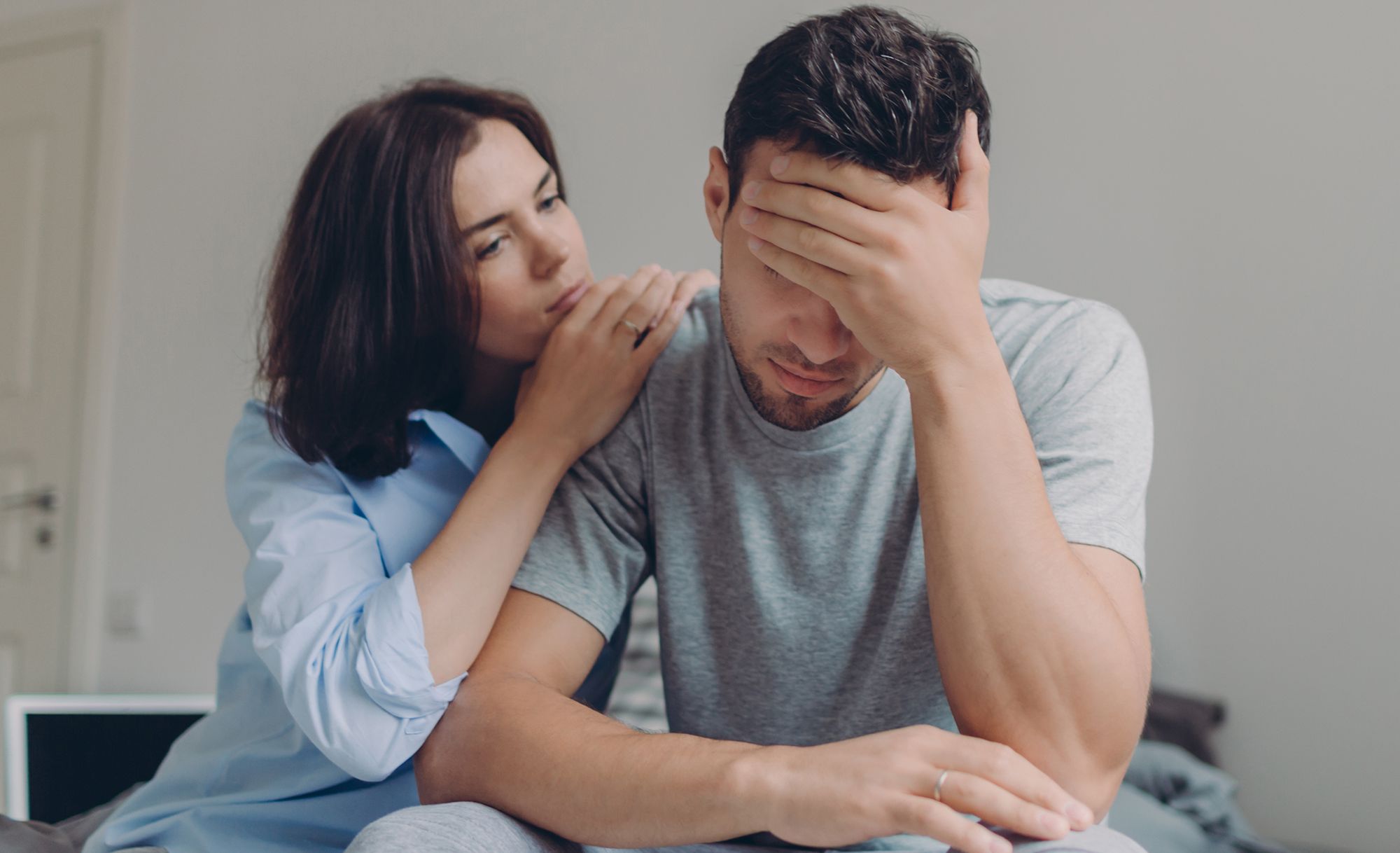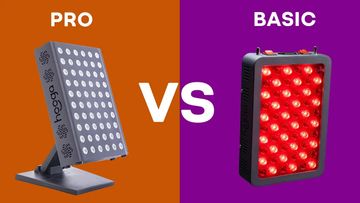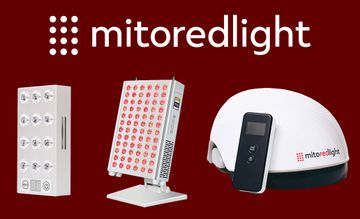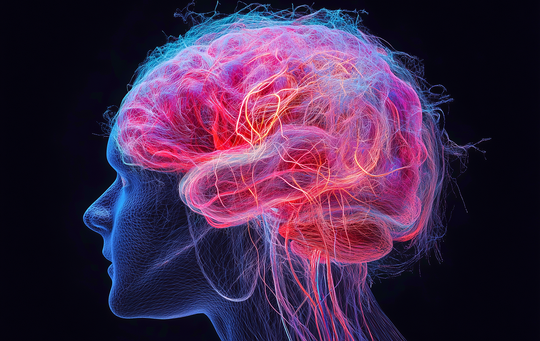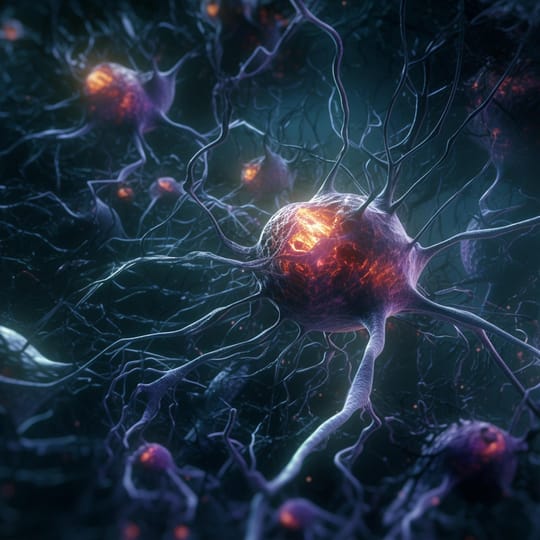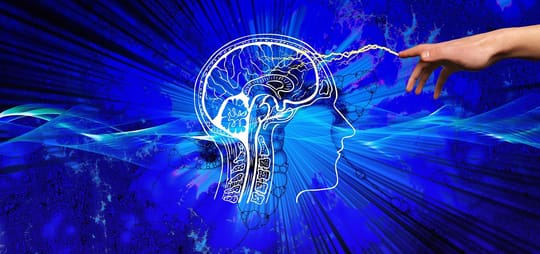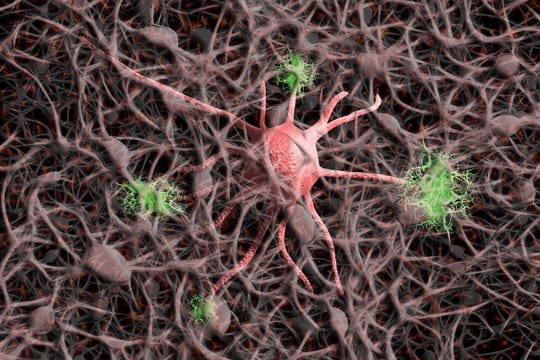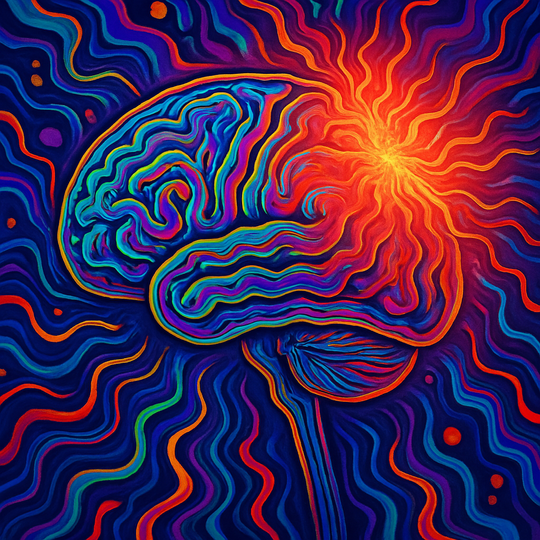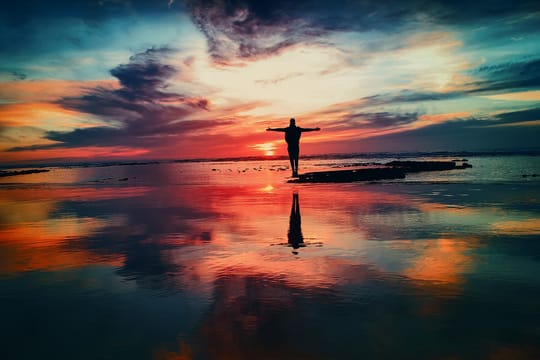In this blog post, I'll talk about red light therapy for depression. Different interrelated conditions will be considered, such as red light therapy for mental health, for anxiety, for Seasonal Affective Disorder (SAD), mood, and more.
You'll also learn the basics of the best treatment protocols for these goals. Let's begin with the basics, though:
Light Therapy And Red Light Therapy Benefits For Mental Health
First up, let's explore how red light therapy benefits mental health in general. The red light therapy mental health link has been explored in several studies (1; 2; 3; 4; 5; 6; 7; 8; 9; 10). Many different domains of mental health are included here, such as Alzheimer's disease, depression, anxiety, cognitive problems, and even psychiatric disorders lately.
For many of these disorders, light therapy in general and red light therapy specifically helps. More high-quality studies with human participants are needed to confirm most of these effects before conservative medicine will prescribe such treatments universally, though.
"Sixteen studies, which included four randomized controlled trials (RCTs), met the inclusion criteria. Infrared wavelength ranges from 800 to 830 nm, power density of 250 mW/cm2 and energy density of 60 to 120 J/ cm2 were the most used PBMT parameters. Bias risk assessment was performed to evaluate the quality of RCTs in which 2 out of 4 RCTs were evaluated as high quality. Based on grade practice recommendations, PBMT can be classified as strongly recommended for moderate grade of major depressive disorder (MDD) and recommended for anxiety disorder. In bipolar disorder, further studies are needed to recommend this therapeutic method." (2).
These higher power densities are warranted because the light needs to penetrate through the skull.
Nevertheless, in the last few years, there's been tons of research emerging for different brain conditions that either affect mental health and/or your mood. Examples here are Parkinson's disease, dementia, traumatic brain injury, Post-Traumatic Stress Disorder, and even preventing a stroke or recovery from it.
Many devices have been developed for this aim as well, such as the Vielight devices that are made to be placed on the skull or affect the blood flow to the brain through your nose, or the Neuronic Neuradiant 1070.
(For the Vielight, code ALEX10 saves you 10%!).
Check out the example of the Neuronic Neuradiant 1070 below, that can be used for many of the brain conditions I've described before:
I don't want to venture too deeply into the topic of mental health in general though. Suffice it to say that studies are published on this topic tremendously quickly.
What Does SAD Mean In Mental Health?

Next up, there's the relationship between Seasonal Affective Disorder (SAD) and mental health. SAD is commonly understood as "winter depression". A small part of the human population is affected by SAD and they'll only feel the effects when there's little natural sunlight reaching the earth because of the distance to the equator (11; 12; 13; 14; 15; 16).
A recent study summarizes SAD's effects as follows:
Symptoms related to SAD include inattentiveness, hopelessness, depression, social withdrawal, and fatigue. The symptoms have to be recurrent only during a particular time of the year for two consecutive years. It follows the recovery period after each seasonal period is over. The condition is treatable by medications, cognitive behavior therapy, and other options include vitamin D supplementation, light therapy, and electroconvulsive therapy in some cases.
Seasonal affective disorder is classified as depression related to climate and seasonal weather changes. It shares similar symptoms with other modes of depression (11).
SAD also increases the risk of getting other psychiatric disorders, in turn. SAD isn't fully understood scientifically. However, what is known is that light therapy can play a huge role in countering SAD. Cortisol might act differently in people with SAD, in part, because of the absence of light.
Normally, cortisol rises late at night to wake you up. Bright light in the morning subsequently turns off that cortisol response. But in people with SAD, cortisol might be abnormally dysregulated.
Nevertheless, bright light is very likely a great support to counter SAD, although not all studies agree on this topic (17; 18; 19; 20; 21; 22). In many studies, light therapy works as well as taking antidepressants but the combination works best. And, of course, light therapy doesn't come with potential side-effects so it's a great conservative treatment to start with.
For depression in general, the track record is poorer though. A likely explanation there is that depression isn't necessarily caused by the absence of bright light but can have many underlying reasons.
Next up, let's explore the elephant in the room - red light therapy for depression:
Is Red Light Therapy Good For Depression?
What about red light therapy and depression? Does red light therapy help with depression? Let's explore a few studies (23; 24; 25; 26; 27; 28; 29; 30).
Like any body part that is treated with light, energy-production is affected. The light penetrates through the skull and then affects so-called "mitochondria" - the energy-producing factories of your cells (23). That way, light has a direct effect on the available energy in your brain. Inflammation is also affected through that mechanism.
The best results seem to be achieved when light is applied directly to the skull (24). That method is called "transcranial" light therapy - or light therapy through the skull. Transcranial red light therapy can even affect Major Depressive Disorder, or an officially diagnosed depression by a medical professional.
A recent study states that:
"[transcranial red light therapy] with [near infrared] light demonstrated antidepressant properties with a medium to large effect size in patients with [Major Depressive Disorder]." (25)
So it's the near infrared light that's especially praised, and transcranial therapy is the basis of treatment. Studies that summarize all available research do state that more research with a higher quantity of human participants is needed though (26).
Animal studies are extremely positive so far, for both depression and anxiety (27; 30). These studies show improvements in serotonin levels in the brain as well as improved blood flow through what is called "Nitic Oxide". Better blood flow will positively influence overall brain health.
Next up, let's consider the effects on anxiety:
Red Light Therapy For Depression And Anxiety
Next up, red light therapy for depression and anxiety. These two conditions are frequently interrelated. So let's focus on red light therapy and anxiety here. Fewer high-quality studies are available on red light therapy and anxiety but you can still draw some lessons from them (31; 32; 33; 34; 35; 36).
For nerds, the following setup had good effects:
for 20 min (continuous wave; 830 nm peak wavelength; average irradiance 30 mW/cm2; average fluence 36 J/cm2; total energy delivered per session 2.9 kJ: total output power 2.4 W) broadly on the forehead (total area 80 cm2) with an LED-cluster headband (31).
Once again, it's near-infrared, that has the best track record in this case, and treatment directly to the brain. Anxiety drops while sleep quality improves.
The nitric oxide and serotonin benefits I talked about before are applicable to anxiety as well (32). In different studies, different near-infrared wavelengths work, such as 945nm as well (34).
Overall, the research on anxiety is promising but we do need far more high-quality studies with a good quantity of human participants.
Next up:
Red Light Therapy For Mood
Next up, does red light therapy for mood work? Little evidence exists that red light therapy improves an already normal mood. All of the studies I've quoted before use study participants who have mood disorders in one way or another, whether that's anxiety, depression, or neurodegenerative disorders.
But, I haven't found any studies with younger healthier participants that looked at whether red light therapy for mood works in them. Hopefully, more research will be released on this topic over time.
Anecdotally, however, many people do feel better and often experience a mood boost using red light therapy. No, that's not a scientific fact but for many people, it might still be an essential piece of information.
Next up:
Can Red Light Therapy Help With Seasonal Depression?
So let's talk about red light therapy for seasonal depression. There are no direct studies on red light therapy and seasonal depression or SAD, as far as I know. However, due to the strong effect red light therapy has for depression in general, it's very likely that here an effect can be found too.
For definitive proof, though, you'll have to wait for studies to investigate this phenomenon directly. So right now, your best evidence-backed bet is to use regular light therapy, with visible light including blue, for winter depression during the winter months.
Next up:
Is RLT A Potential Solution for Depression and Anxiety? Research and Testimonials
Well, this section is easy to write for me. I'm originally from the Netherlands and since I was young, I always felt way better during the spring and summertime compared to the fall and wintertime.
And, by analyzing the pattern throughout the years I've come to the conclusion it's both a matter of a higher Ultra-Violet-light Index (UV Index) and temperature. I feel far better with higher temperatures and a UV index above 6.
In the last few years, I've not only lived in the Netherlands but spend the August-April months in Latin America, such as near Cancun in Mexico or the Northern Desert in Peru where it's sunny almost all the time. And, these hot and humid places have a huge effect on my mood and well-being.
So I do consider myself susceptible to SAD and lots of bright light is the easy fix for this problem. Even in the Netherlands though, I did really well with a halogen floodlight, for instance, or a reptile bulb near my desk. You don't need a expensive SAD light for this goal, even thought it will be better than nothing.
You can get a 500W halogen floodlight on Amazon, for instance. Or you can set up a few very strong 250W incandescent light bulbs near your desk where you're working - if you have that luxury.
If you are a person who has SAD these old-fashioned light bulbs will work way better than a SAD lamp simply because of the more natural light spectrum.
Simply put, all the colors of the light spectrum are emitted by these bulbs, absent of ultraviolet light. So you're getting violet, blue, cyan, green, yellow, red, and different types of infrared light exposure.
Yes, there's a ton of infrared emitted by these heat bulbs but that's similar to sunlight. Sunlight also has 50-60% infrared, and for these incandescent or halogen light bulbs that's the same.
Also, in the last few years, I've added red light therapy to my routine as well. Red light therapy enhances my recovery even during the summertime in the Netherlands, and supports my mood. If you want a good panel, check out Alex Fergus' reviews of the best tabletop panels or the best red light therapy panels comparison.
Tips On How To Use Red Light Therapy For Depression
Here are some tips on how to use red light therapy for depression:
- For SAD, use bright light in the early morning, for 30-60 minutes (21). For SAD, bright light that contains blue light is arguably especially important because it sets your body's day and night cycle - the circadian rhythm. Get an SAD lamp, or a 500W Halogen Floodlight or 250W Incandescent Light Bulb near your desk for countering SAD.
- For Major Depressive Disorder (MDD), a minimal threshold likely exists for power output and dose (28). Near infrared is also much more praised than red light for depression. So you'll likely want a higher-powered device that emits lots of near infrared to counter depression best. Pulsing, such as at 10 Hz, might work better too than continous (29).
- For transcranial treatment, you may want to get a Vielight and use code ALEX10 to save you 10%. Or you can use ALEXFERGUS5 for the Neuradiant 1070 helmet. Both options are excellent.
Lastly, let's conclude:
Conclusion: Red Light Therapy For Depression Is Hopeful!
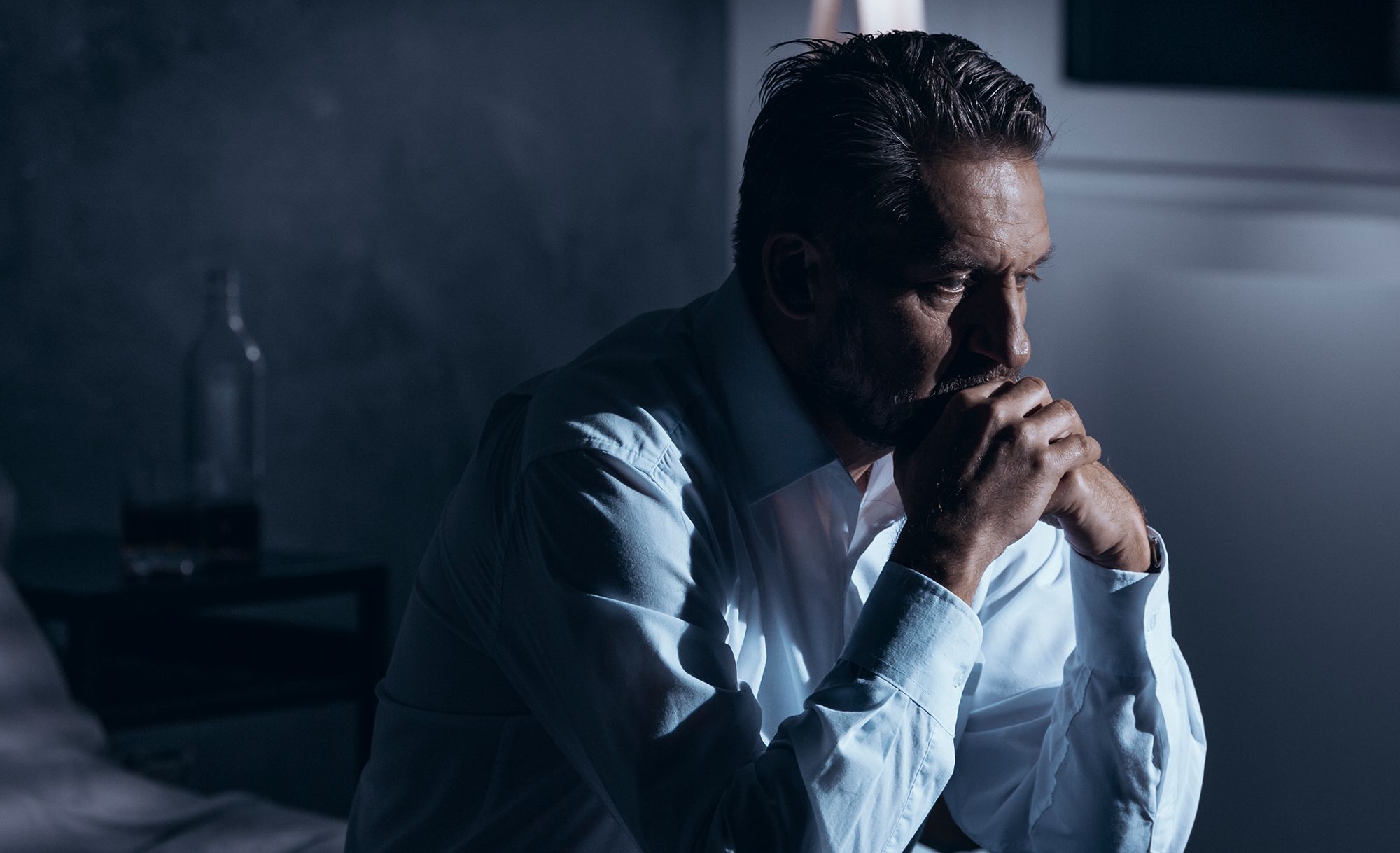
So, "is red light therapy good for depression?" Yes, and for anxiety too. Red light therapy for SAD is unproven currently, however, as is red light therapy for mood. But, it's quite likely that benefits will be found here eventually.
For the best results, use a combination of near infrared wavelengths, such as 810nm, 830nm, 1063nm, and so forth. Higher dosages are best because the light needs to penetrate the skull, which is a very hard tissue that blocks a lot of light.
Keep in mind that depression and anxiety are complex and often causes by different underlying reasons. So red light therapy for anxiety or depression isn't a panacea.
Items Mentioned
- Best Red Light Therapy Tabletop Panels
- The Best Red Light Therapy Panels
- SAD Lamp
- 500W Halogen Floodlight
- 250W Incandescent Light Bulbs
- Vielight - use code ALEX10 saves you 10%!
- Neuronic Neuradiant 1070 - and use discount code ALEXFERGUS5
This is a post by Bart Wolbers of Lighttherapyinsiders. Bart finished degrees in Physical Therapy (B), Philosophy (BA and MA), Philosophy of Science and Technology (MS - with distinction), and Clinical Health Science (MS), has had training in functional medicine, and is currently chief science writer.

